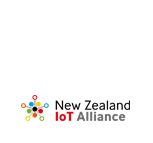With digital content replacing physical books and online learning platforms taking the lead, the internet has become the go-to source for educational needs. High-speed internet is the key to this online world, making smooth and effective learning possible.
Now, let’s talk about one piece of the puzzle: The Internet of Things. This exciting technology is improving the way we teach and learn in many ways. It makes sharing information, working together on tasks, and talking with teachers much easier, including a few current examples:
- Smartboards: These interactive screens have brought lessons to life in the classroom.
- Electronic bracelets: These can be used for attendance recording and tracking student progress.
- Classroom webcams: These enable virtual classrooms and tours, making learning fun and relatable.
There are still issues in education, such as outdated teaching methods and safety concerns. But, many believe that IoT solutions can help solve these problems, such as using automated attendance tracking or assisting disabled students.
With more students than ever owning smartphones, IoT devices are becoming an ever-growing part of classroom life to help with things like note-taking, schedule checking, and research. The rise of “smart schools” is saving energy and costs too. IoT isn’t just for schools; it’s changing higher education too. It allows flexible, personalised learning, and helps universities keep track of students, staff, and resources, leading to safer campuses.
The influence of IoT extends beyond the traditional classroom and encompasses even fields like driver’s education. A shining example of this is CoDriVR, a New Zealand-based startup. This virtual reality driving simulation programme offers a hands-on driving experience on New Zealand roads without ever stepping into a car.
Students at Waimate High School, where CoDriVR has been introduced, have found the technology to be incredibly beneficial. They are gaining real-world driving skills and preparing for their driver’s licenses, all within the safe confines of a virtual environment.
CoDriVR isn’t just a fun experience; it’s an educational tool that bridges the gap between theory and practice. Students gain a real-world understanding of the New Zealand Road Code before they’re ever allowed on the road. This immersive experience lets them learn firsthand what driving in traffic is like, without the need to travel to busy areas like Timaru or Oamuru.
As we’ve seen with the recent uptake of gamification in the education space, the potential for IoT to play a role in education is becoming greater. In May, the Government announced a $160 million tax rebate scheme for game developers. This move will amplify the potential of a sector that added over $400 million to the economy in 2022 and is on the brink of even greater growth. Integrating IoT sensors and devices can bring even greater transformation to how we learn and engage in our education.
Alison Mackie,
Executive Director
NZ IoT Alliance
Read full news here: Transforming education one device at a time






